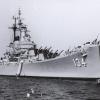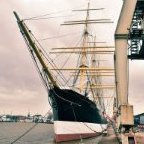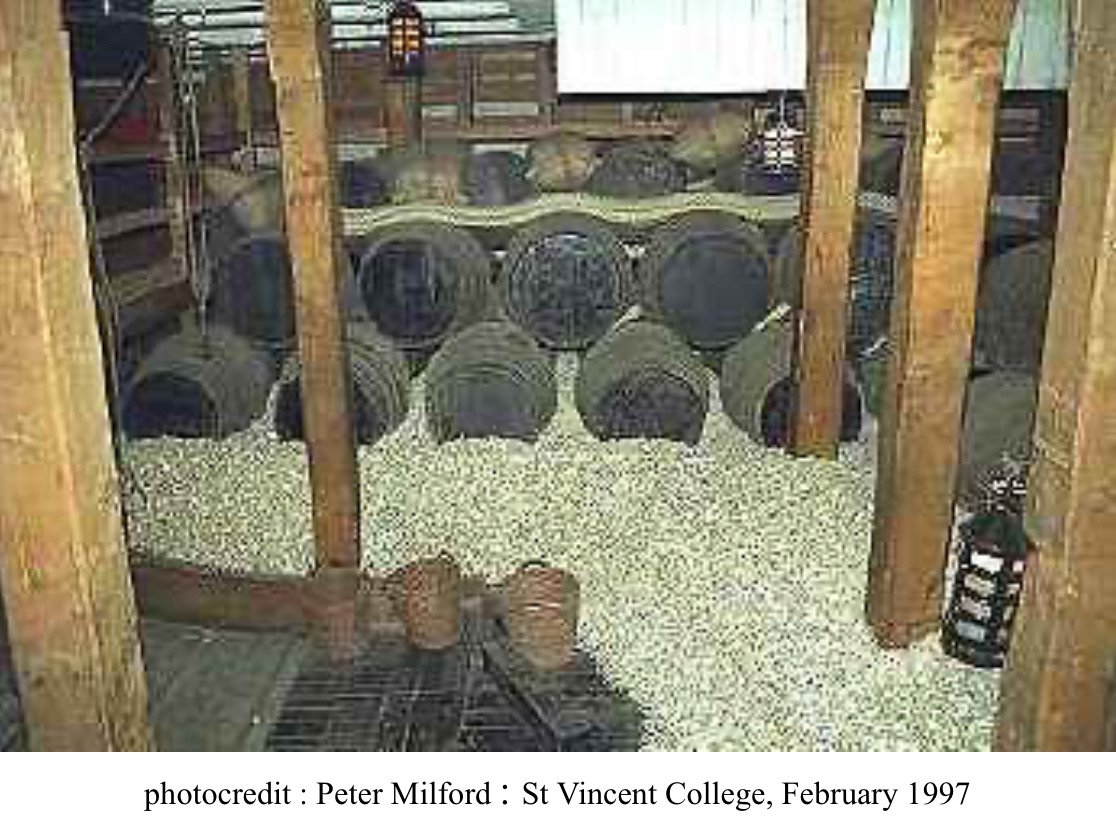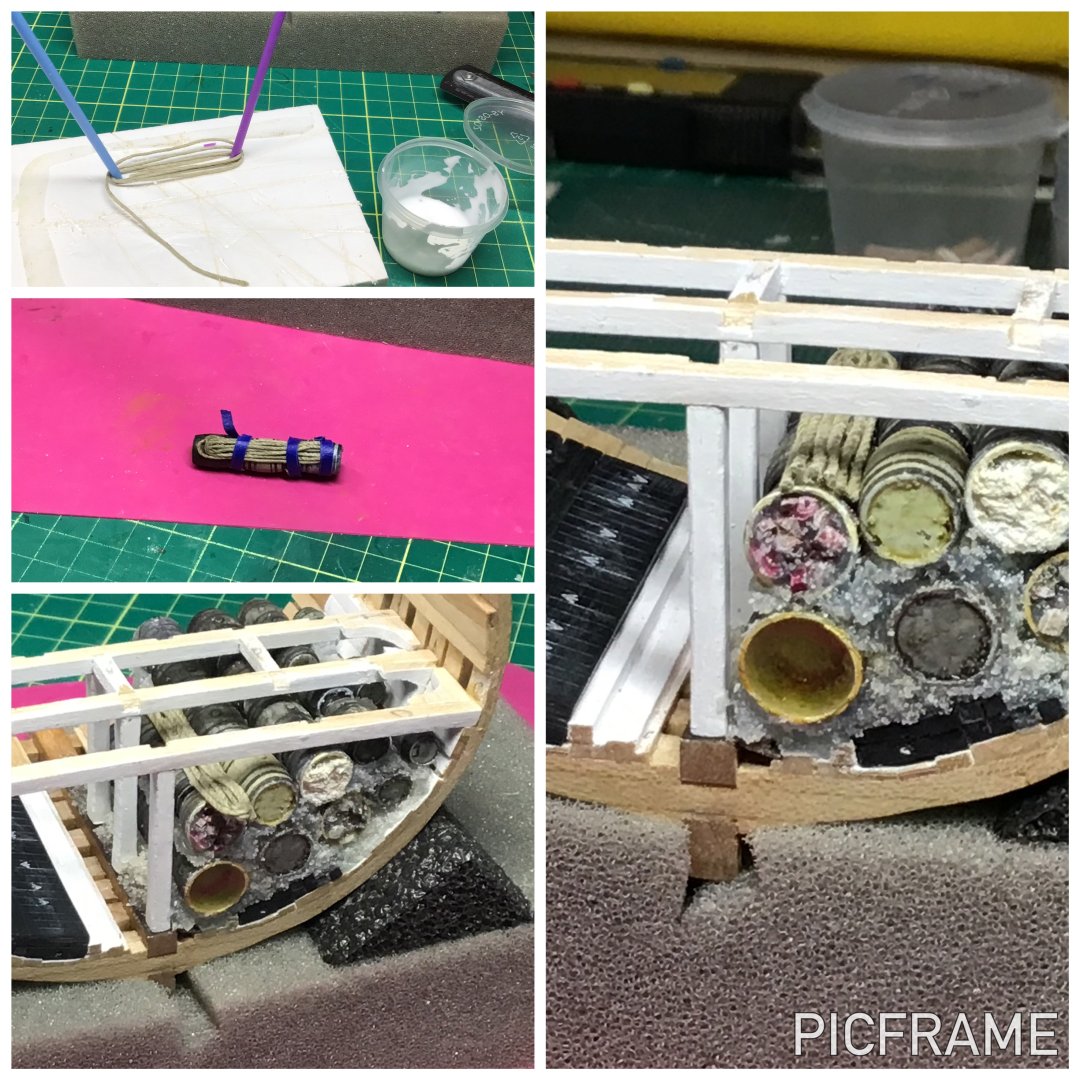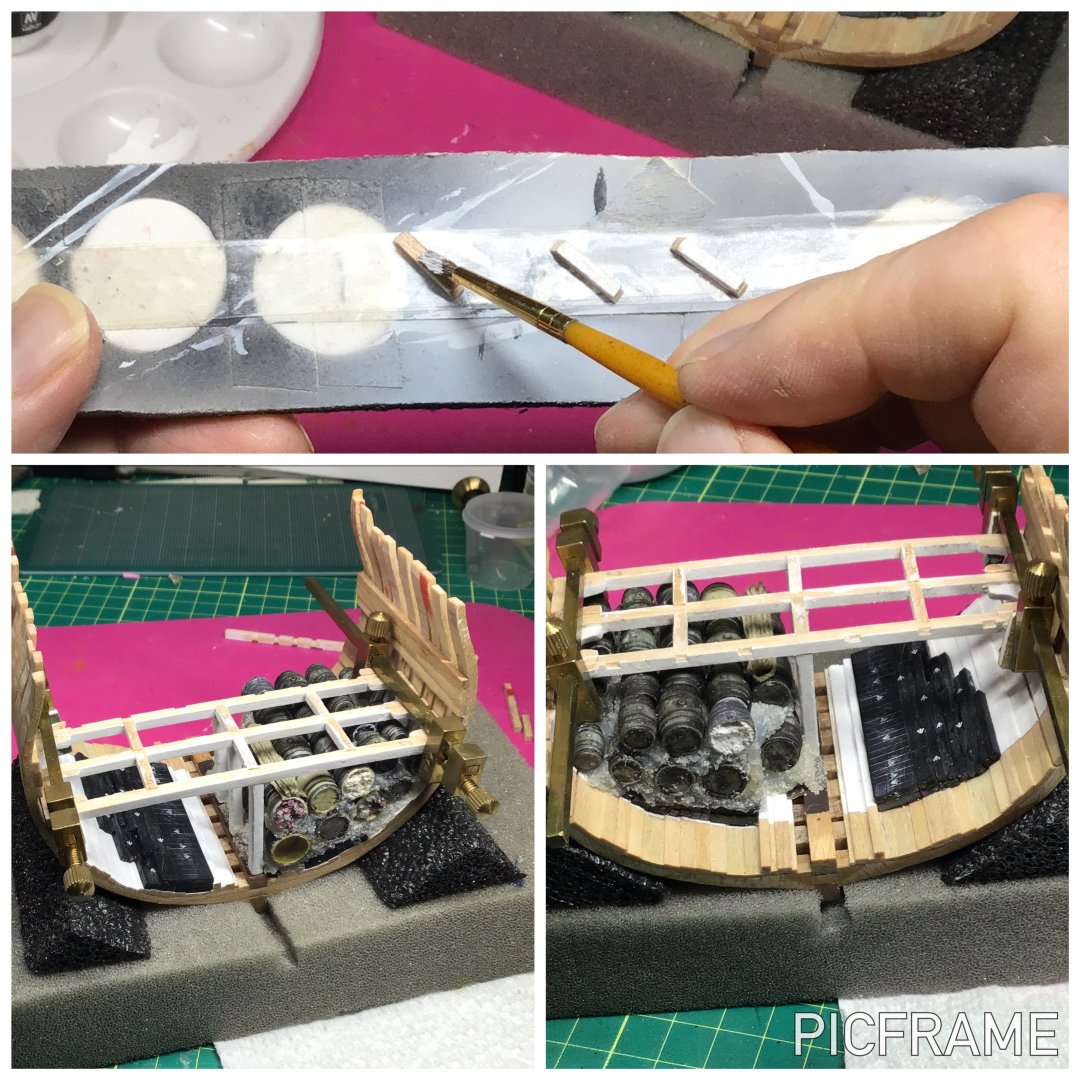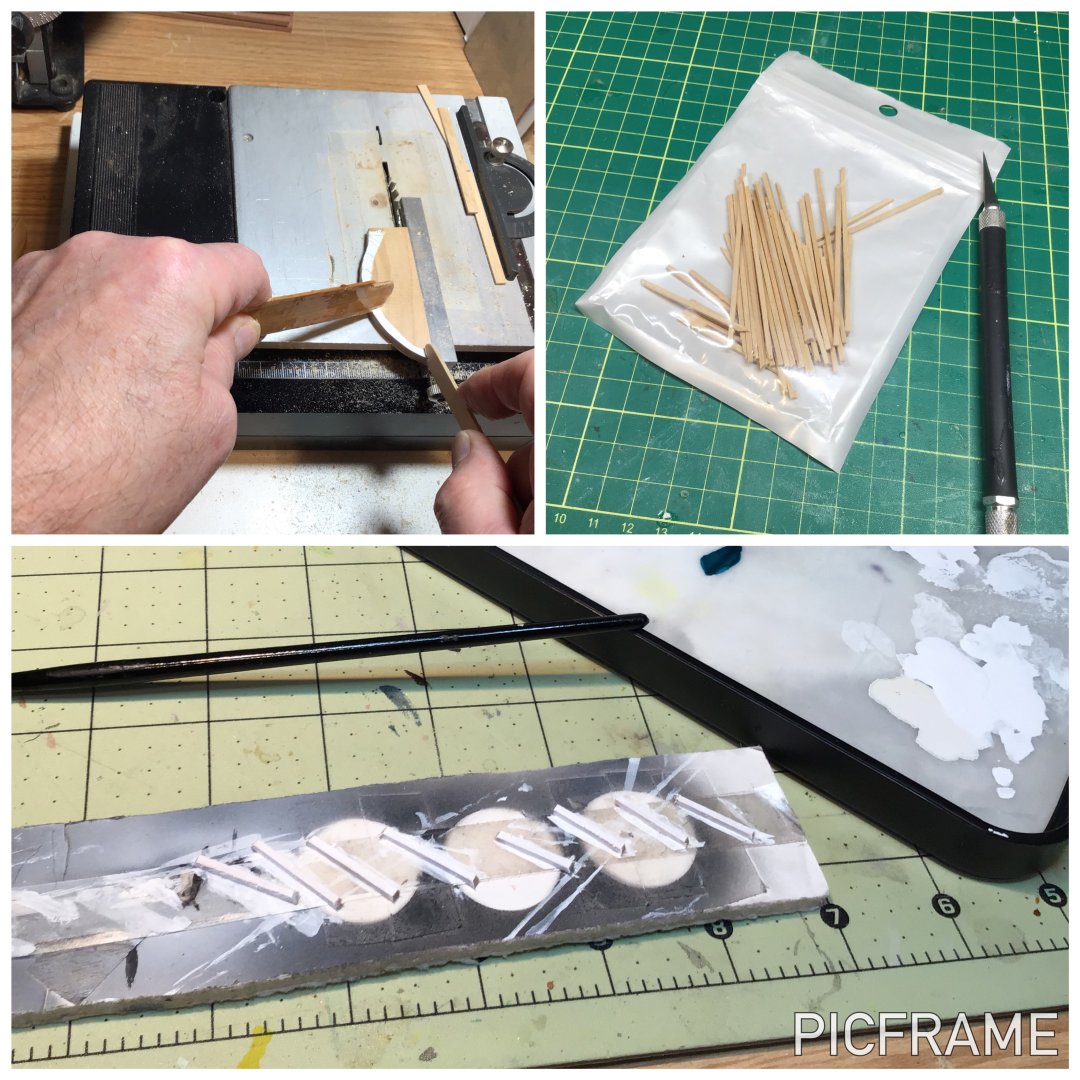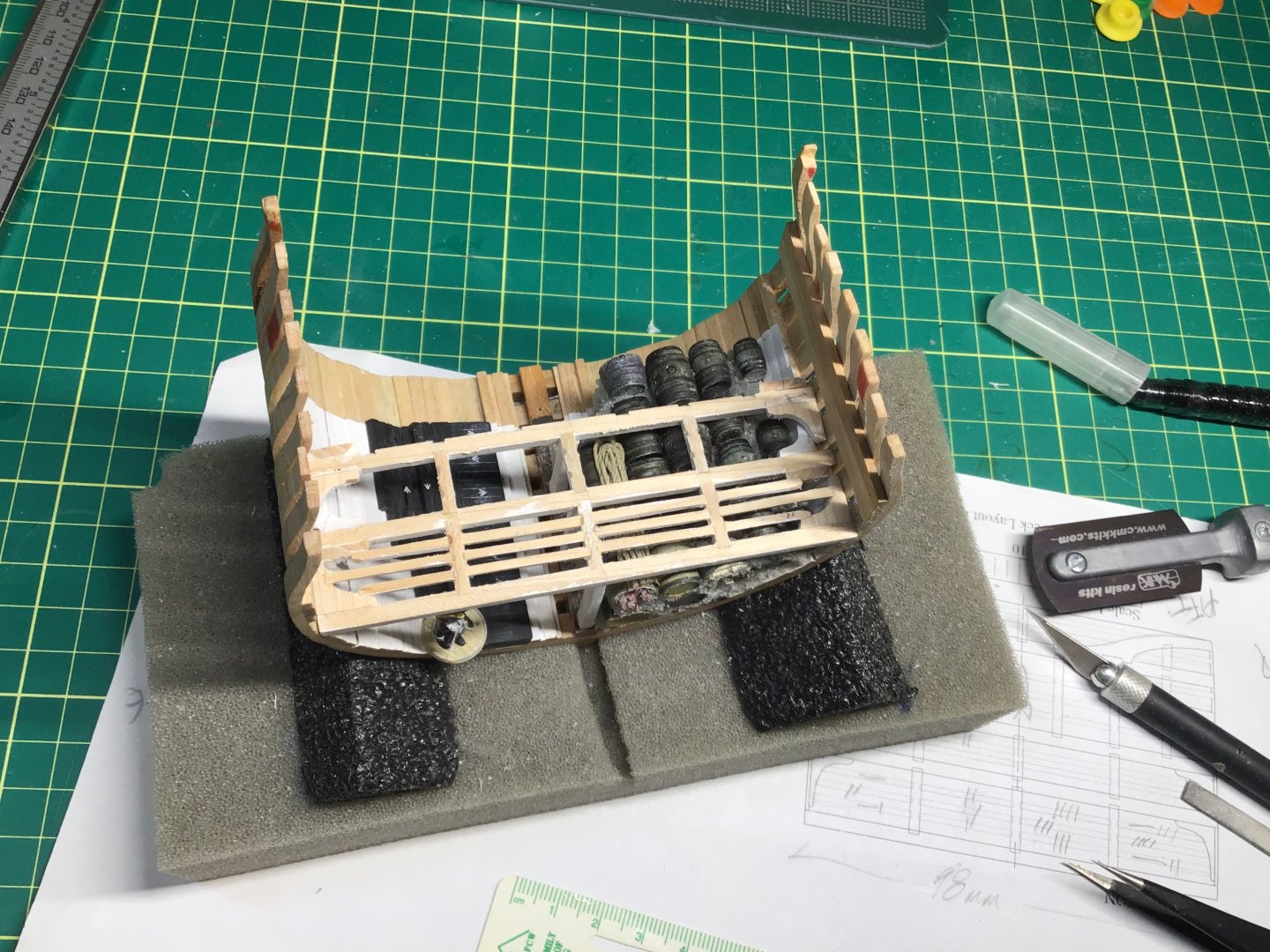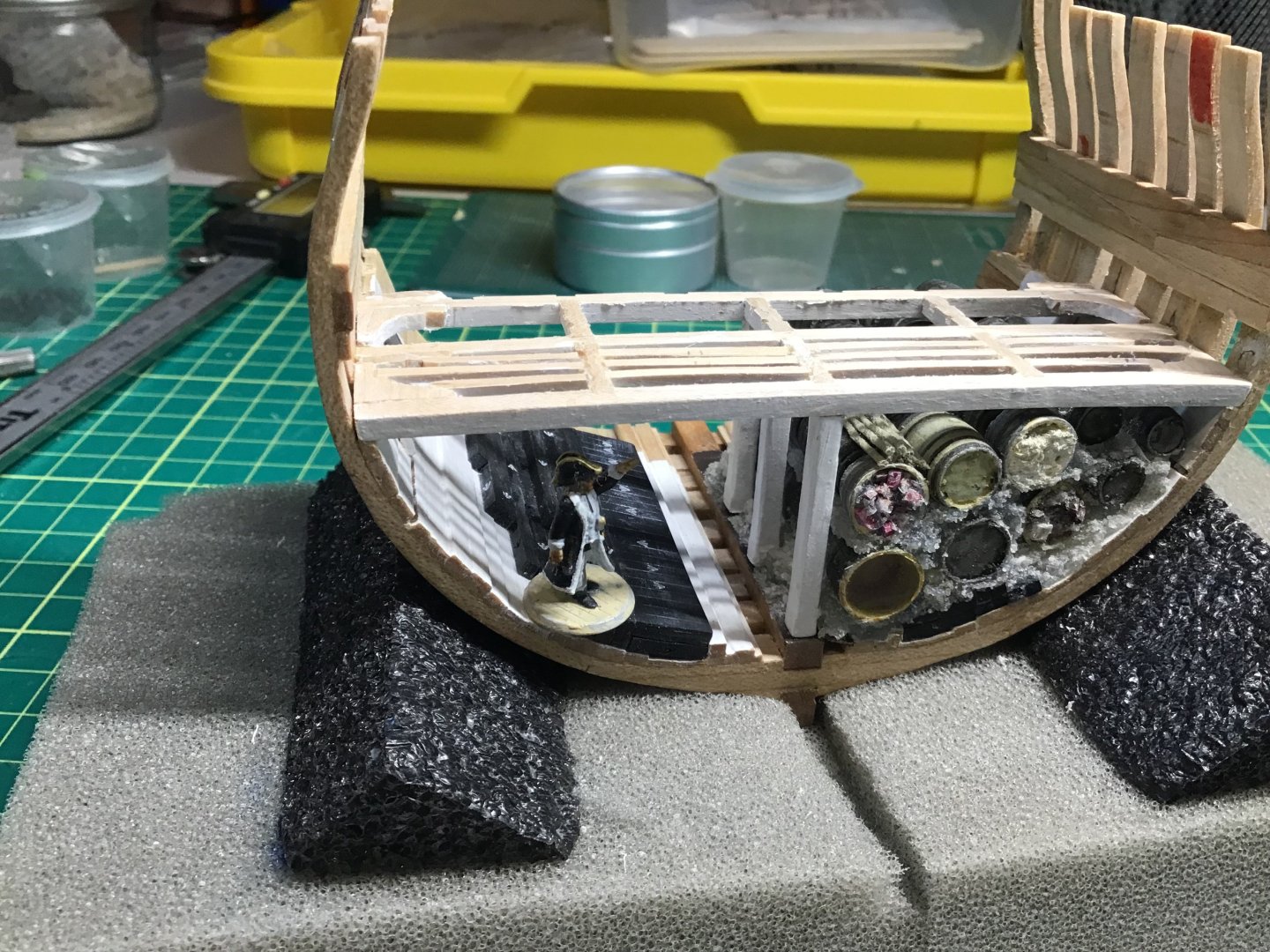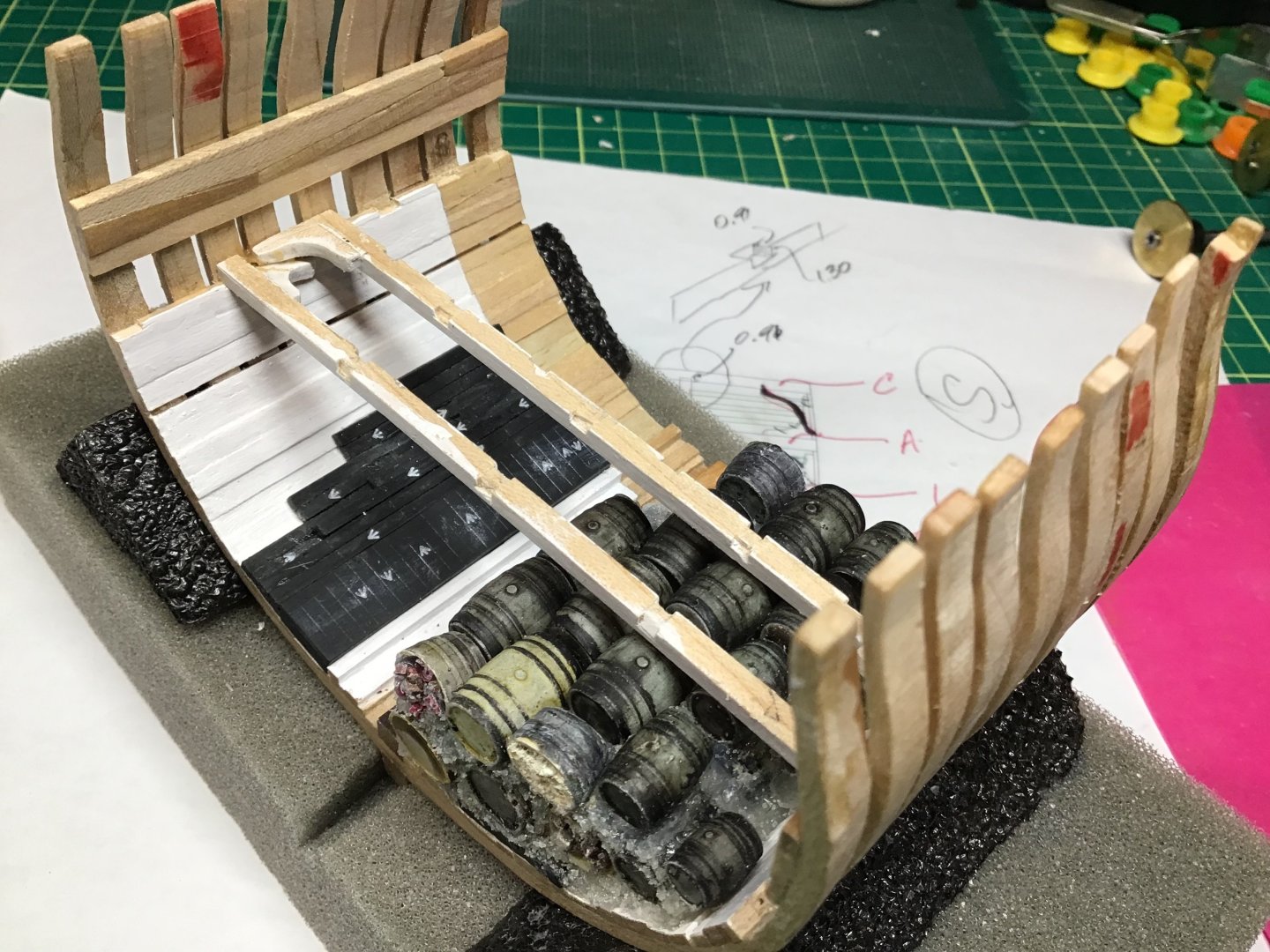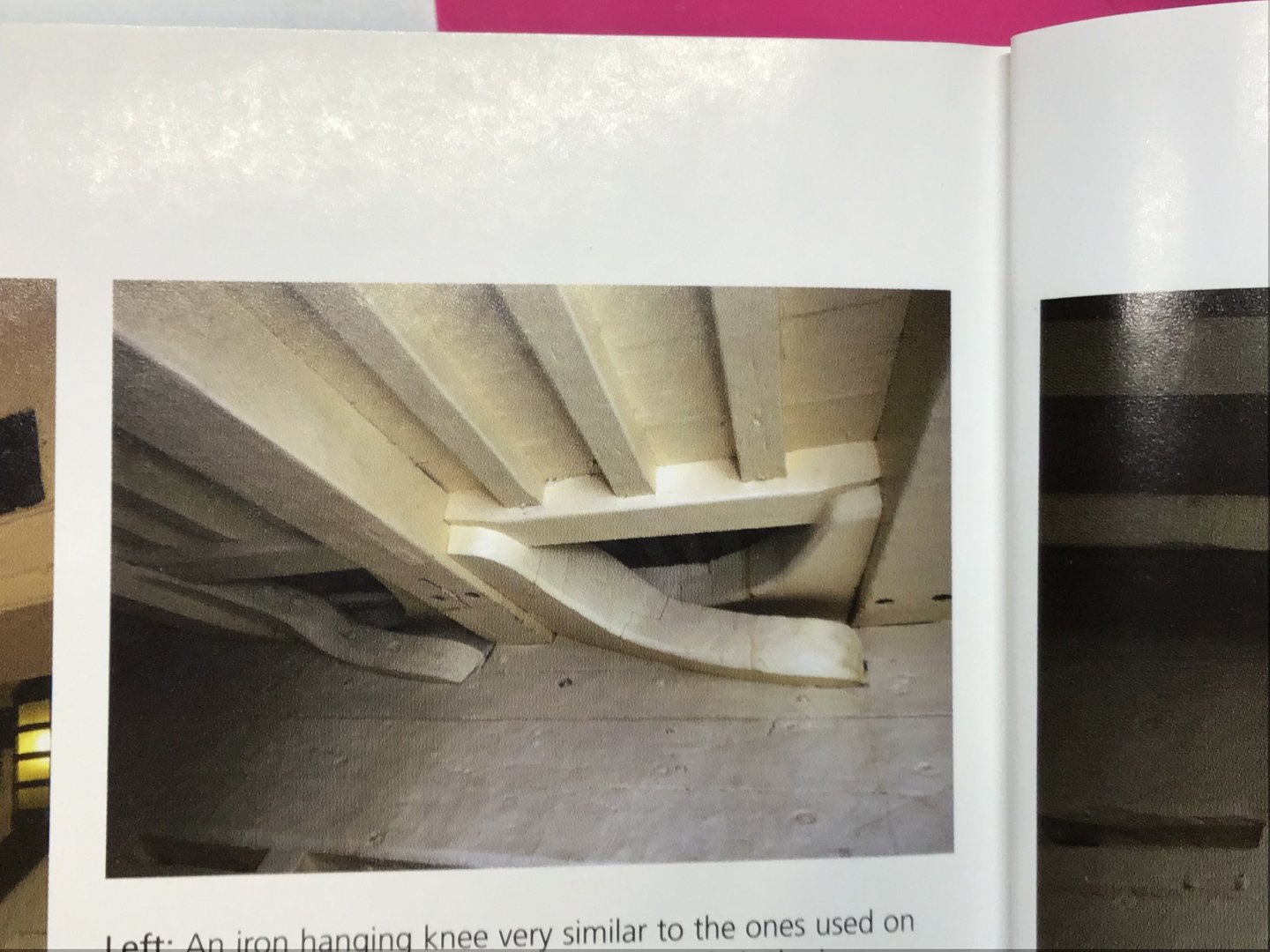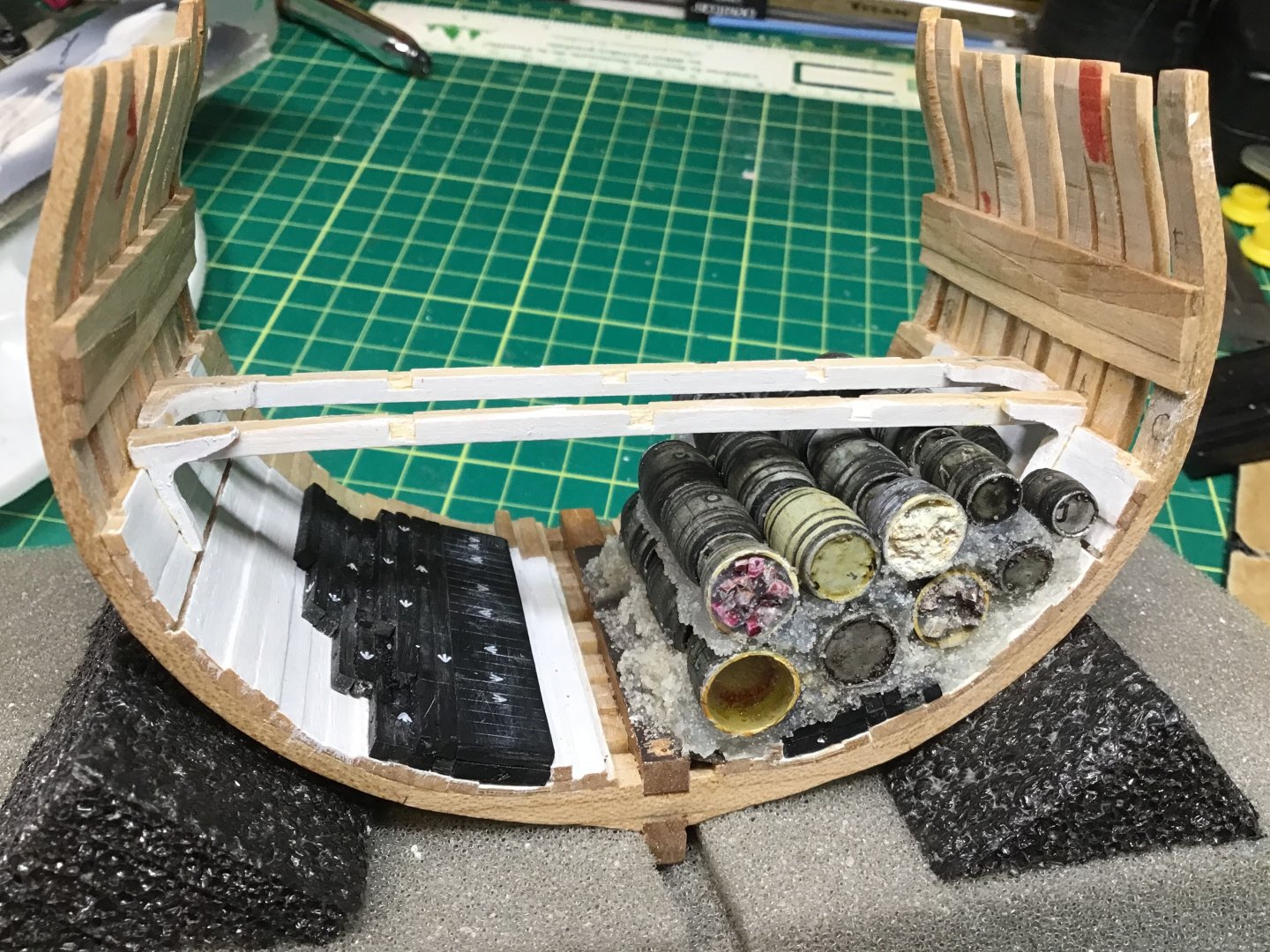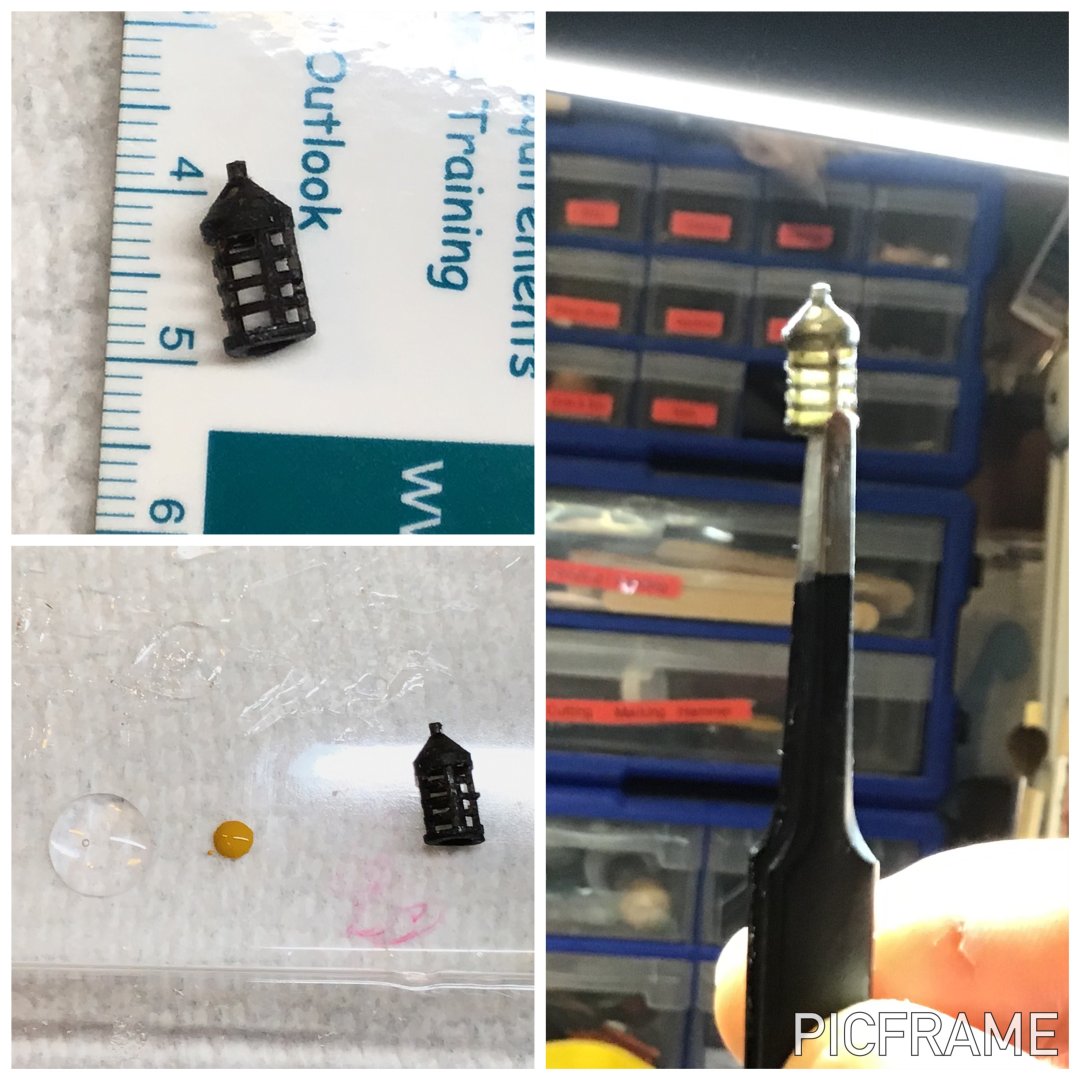-
Posts
310 -
Joined
-
Last visited
About Gabek
- Birthday 06/21/1961
Contact Methods
-
Website URL
https://sites.google.com/view/hms-triton-ship-model/home
Profile Information
-
Gender
Male
-
Location
Winnipeg, Canada
-
Interests
Fishing, painting figurines (Warhammer), wood carving, fly-tying, reading, baking (cheesecakes a specialty), turning pens. Newest hobby: 3D resin printing (I love it!)
Recent Profile Visitors
-
 GrandpaPhil reacted to a post in a topic:
HMS Agamemnon 1781 by Michael P – FINISHED - scale 1:150 – 64-gun Third Rate - Ardent-class Man-of-War
GrandpaPhil reacted to a post in a topic:
HMS Agamemnon 1781 by Michael P – FINISHED - scale 1:150 – 64-gun Third Rate - Ardent-class Man-of-War
-
 GrandpaPhil reacted to a post in a topic:
HMS Agamemnon 1781 by Michael P – FINISHED - scale 1:150 – 64-gun Third Rate - Ardent-class Man-of-War
GrandpaPhil reacted to a post in a topic:
HMS Agamemnon 1781 by Michael P – FINISHED - scale 1:150 – 64-gun Third Rate - Ardent-class Man-of-War
-
 Canute reacted to a post in a topic:
USCG Harriet Lane by Knocklouder - Model Shipways - 1:144 (1/12 inch = 1 foot)
Canute reacted to a post in a topic:
USCG Harriet Lane by Knocklouder - Model Shipways - 1:144 (1/12 inch = 1 foot)
-
 robert952 reacted to a post in a topic:
USCG Harriet Lane by Knocklouder - Model Shipways - 1:144 (1/12 inch = 1 foot)
robert952 reacted to a post in a topic:
USCG Harriet Lane by Knocklouder - Model Shipways - 1:144 (1/12 inch = 1 foot)
-
 _SalD_ reacted to a post in a topic:
USCG Harriet Lane by Knocklouder - Model Shipways - 1:144 (1/12 inch = 1 foot)
_SalD_ reacted to a post in a topic:
USCG Harriet Lane by Knocklouder - Model Shipways - 1:144 (1/12 inch = 1 foot)
-
 Keith Black reacted to a post in a topic:
USCG Harriet Lane by Knocklouder - Model Shipways - 1:144 (1/12 inch = 1 foot)
Keith Black reacted to a post in a topic:
USCG Harriet Lane by Knocklouder - Model Shipways - 1:144 (1/12 inch = 1 foot)
-
 Knocklouder reacted to a post in a topic:
USCG Harriet Lane by Knocklouder - Model Shipways - 1:144 (1/12 inch = 1 foot)
Knocklouder reacted to a post in a topic:
USCG Harriet Lane by Knocklouder - Model Shipways - 1:144 (1/12 inch = 1 foot)
-
 Gabek reacted to a post in a topic:
USCG Harriet Lane by Knocklouder - Model Shipways - 1:144 (1/12 inch = 1 foot)
Gabek reacted to a post in a topic:
USCG Harriet Lane by Knocklouder - Model Shipways - 1:144 (1/12 inch = 1 foot)
-
 Gabek reacted to a post in a topic:
HMS Pegasus 1776 by Knocklouder - FINISHED - Amati/Victory Models - 1:64
Gabek reacted to a post in a topic:
HMS Pegasus 1776 by Knocklouder - FINISHED - Amati/Victory Models - 1:64
-
 Gabek reacted to a post in a topic:
St Roch by Lecrenb - 1:48 scale - RCMP Schooner rigged as schooner c. 1930/35
Gabek reacted to a post in a topic:
St Roch by Lecrenb - 1:48 scale - RCMP Schooner rigged as schooner c. 1930/35
-
 Gabek reacted to a post in a topic:
St Roch by Lecrenb - 1:48 scale - RCMP Schooner rigged as schooner c. 1930/35
Gabek reacted to a post in a topic:
St Roch by Lecrenb - 1:48 scale - RCMP Schooner rigged as schooner c. 1930/35
-
 Gabek reacted to a post in a topic:
St Roch by Lecrenb - 1:48 scale - RCMP Schooner rigged as schooner c. 1930/35
Gabek reacted to a post in a topic:
St Roch by Lecrenb - 1:48 scale - RCMP Schooner rigged as schooner c. 1930/35
-
 Gabek reacted to a post in a topic:
St Roch by Lecrenb - 1:48 scale - RCMP Schooner rigged as schooner c. 1930/35
Gabek reacted to a post in a topic:
St Roch by Lecrenb - 1:48 scale - RCMP Schooner rigged as schooner c. 1930/35
-
 Gabek reacted to a post in a topic:
HMS Bellerophon 1786 by AON – scale 1:64 – 74-gun 3rd Rate Man of War - Arrogant-Class
Gabek reacted to a post in a topic:
HMS Bellerophon 1786 by AON – scale 1:64 – 74-gun 3rd Rate Man of War - Arrogant-Class
-
 Gabek reacted to a post in a topic:
HMS Bellerophon 1786 by AON – scale 1:64 – 74-gun 3rd Rate Man of War - Arrogant-Class
Gabek reacted to a post in a topic:
HMS Bellerophon 1786 by AON – scale 1:64 – 74-gun 3rd Rate Man of War - Arrogant-Class
-
 Gabek reacted to a post in a topic:
HMS Bellerophon 1786 by AON – scale 1:64 – 74-gun 3rd Rate Man of War - Arrogant-Class
Gabek reacted to a post in a topic:
HMS Bellerophon 1786 by AON – scale 1:64 – 74-gun 3rd Rate Man of War - Arrogant-Class
-
 Gabek reacted to a post in a topic:
HMS Bellerophon 1786 by AON – scale 1:64 – 74-gun 3rd Rate Man of War - Arrogant-Class
Gabek reacted to a post in a topic:
HMS Bellerophon 1786 by AON – scale 1:64 – 74-gun 3rd Rate Man of War - Arrogant-Class
-
 yvesvidal reacted to a post in a topic:
HMCS Agassiz by GabeK - HMV - 1:250 - CARD
yvesvidal reacted to a post in a topic:
HMCS Agassiz by GabeK - HMV - 1:250 - CARD
-
 thibaultron reacted to a post in a topic:
Casks - hollow with separate head (lid)
thibaultron reacted to a post in a topic:
Casks - hollow with separate head (lid)
-

Casks - hollow with separate head (lid)
Gabek replied to Gabek's topic in 3D-Printing and Laser-Cutting.
Glad you are using them, Tillsbury! Please send a photo when you have them installed. Sharp Tools and Clear Skies! - Gabe -
 TJM reacted to a post in a topic:
Casks - hollow with separate head (lid)
TJM reacted to a post in a topic:
Casks - hollow with separate head (lid)
-
Bravo, Michael! Very nicely done in every aspect. Encore! Encore! Clear skies and sharp tools, Gabe
- 61 replies
-
- Agamemnon
- Ardent-class
-
(and 2 more)
Tagged with:
-
Great job, Bob! Can't wait to see her in person on my next visit! Clear skies and sharp tools, my friend! - Gabe
- 207 replies
-
- vanguard models
- Duchess of Kingston
-
(and 1 more)
Tagged with:
-
Heyo folks, I haven't really done much with the model, but I took a step towards my final presentation: I created a YouTube livestream and a companion website: https://sites.google.com/view/hms-triton-ship-model/home I still have more grandiose plans for the final product, but I have to settle for this for now. For one, I would like to slow down the turntable! I hope to actually work on the model and post an update soon... Clear skies and sharp tools! - Gabe
-
Well done, Bob! You rose to the challenge and put together a great model! It was a treat to be a small part of it. Clear skies and sharp tools, Gabe
- 207 replies
-
- vanguard models
- Duchess of Kingston
-
(and 1 more)
Tagged with:
-
Out on a ledge… I was so put out by my trials with hanging knees that I forgot to take photos of installing a third beam and carlings! So, we recommence the log here: The pillars are actually dry fitted for now…I have plans that might require me to remove them. For instance… In the never-ending pile of details that I keep adding to this model…here's a photo that inspired me to add some cordage to the hold. While I did have some thread hanging around the workshop I bugged my friend, @Knocklouder , for some of his stash to add another "memento" to the Triton. We had planned another coffee visit for an exchange of parts but family illnesses on both sides made it more practical and healthier to just have an exchange at the door. I formed his line into loops, dipped them in GAC 400 and watered down PVA, and wrapped it in wax paper. To fit the contours of the casks, I formed the wet line on some spares that I had kicking around. Once dry, I purposely extended the bundle outside the cross section area and trimmed off the excess. I still had a few technical issues to work out before adding the final beam and carlings. So, inspired by @Knocklouder's speed I dove right in to making some stock for the ledges. I thought I was making 1.5x1.5mm sticks…but it turned out they were more like 1.65x1.65mm. This made a difference later as I realized the spacing I had calculated was messed up. I used a spacer (actually a wooden dowel that I had sanded down years ago and was the perfect measurement for my claculations) to notch the carlings for the ledges next to the beam. The edge of a needle file did a good job of making these notches in the birch. I bevelled the ends of each ledge by dragging them along my handy-dandy DIY sanding stick. While small, I soon got the hang of getting ledges to a correct length and bevel…not without dropping each one at least 23 times! Before gluing them in place I primed-painted-varnished the visible sides. At the outer ends of the beams I made a hash of notching the knees to fit the ledges. So, I made a sacrifice to accuracy and made those joints somewhat hybrid. My decision-making was heavily influenced by the fact that the underside of the mess deck will never be seen. I consider this part of the build as practice for the gun deck. When I started on the middle ledges it became apparent that I messed up the spacing. This is where I discovered that the ledges were, in fact, wider than I had wanted. Not thrilled about tearing off these pieces and starting over I used the mantra, "These will never be seen," and centred the middle ledges as best as possible. And here's Number One pointing out my mistakes… So, I had to stop production right here in order to do some more technical R&D. Hopefully I'll have an update for you quickly… Clear skies and sharp tools! - Gabe
-
I'm watching you! LOL!! Good work, Bob. Funny about forgetting that you owned a tool...happened to me last week: That jeweller's vice I had came in real handy after suffering for two days shaping small parts. Clear skies and sharp tools, Gabe
- 207 replies
-
- vanguard models
- Duchess of Kingston
-
(and 1 more)
Tagged with:
-
Can't wait to see what colours you'll go with on the yawl. By the way, I only really help those who I feel deserve it. You deserve it, Bob. Clear skies and sharp tools! - Gabe
- 207 replies
-
- vanguard models
- Duchess of Kingston
-
(and 1 more)
Tagged with:
-
Barely hanging in there... After a little clean up on the ballast I dusted off the mess deck beams that I had made ...5 years ago! 😐 I'm still struggling with the correct order to install the beams, carlings, ledgers. Part of me wants to work off the model so I have room. Another part of me says to build it in place for stability and correct fitting. Well, it ends up I'm taking a bit of a combined approach... First, working off the model I notched the beams for the carlings. I have acquired some wonderful tools to help me here: Veritas Miniature Marking Gauges from Lee Valley. I managed the cuts using my resin saw and a very sharp Xacto knife. I then dry fit the beams and started on making some carlings. After much deliberation and an email to a learned friend ( @AON ) I soon realized that I really should install the beams to do a proper job of fitting the carlings. I decided to start from the centre and work toward each end of the cross-section - adding the carlings as I go. So, I dusted off the lodging knees and started on installing the centre two beams. It's a good thing I remembered that these would involve the transition from aft-facing to forward-facing lodging knees - as per HMS Trincomalee by Davies and Mudie: I primed, painted and matt varnished the beams, leaving the top clean for better adhesion for deck planks. I glued the lodging knees to the beams in advance because of the tight space that I will be working in. I then installed the two beams with a little shaping and sanding. Feeling rather good about myself I was about to go great guns on the carlings when I realized something...I completely forgot about the hanging knees! These had not been made yet and so I started the process to make them with a bit of ready-made stock I luckily had in my "lumber yard". Jeweller's saw, resin saw, x-acto, needle files, micro-chisels...you name it I likely used it to shape these little things: I was getting tired so I stopped after making two of these and gave them the old prime-paint-finish routine before calling it a night. This morning I woke up and as I started working on the model, my good friend @Knocklouder messaged me. We started chatting about our models and other sundries while I prepped the knees for installation. I felt quite proud of myself being able to multitask like this. Until I realized later that I glued these two hanging knees to THE WRONG BEAM! I had shaped them for the other beam and had scraped paint and varnish off the contact surfaces. Being my first attempts I also wanted to hide them in the middle of the hold. Instead they will be much more visible - in a tiny space - in the hold. Ok, they'll be virtually invisible. Fortunately, they fit quite well. I did leave them a little proud of the top of the beam so I can sand them flush before planking the deck. I sat down to make the remaining hanging knees but walked away after snapping the next two. Fortunately I still have a bit of the knee-stock and will try again - tomorrow. Although...printing them in resin is looking really enticing...just saying! Clear skies and sharp tools! - Gabe
-
Hello Michael, Just to put my mind at ease and for posterity's sake, I did a quick test of glazing with UV resin. I mixed a couple of drops with a tiny amount of acrylic yellow ochre ink. I then rolled a lantern I designed and printed (based on HMS Victory's) in the mix and cured it with my UV light pen. The nice thing with UV curing is that it takes only seconds. Nice to hear about the sunshine! Kind regards, Gabe
- 61 replies
-
- Agamemnon
- Ardent-class
-
(and 2 more)
Tagged with:
About us
Modelshipworld - Advancing Ship Modeling through Research
SSL Secured
Your security is important for us so this Website is SSL-Secured
NRG Mailing Address
Nautical Research Guild
237 South Lincoln Street
Westmont IL, 60559-1917
Model Ship World ® and the MSW logo are Registered Trademarks, and belong to the Nautical Research Guild (United States Patent and Trademark Office: No. 6,929,264 & No. 6,929,274, registered Dec. 20, 2022)
Helpful Links
About the NRG
If you enjoy building ship models that are historically accurate as well as beautiful, then The Nautical Research Guild (NRG) is just right for you.
The Guild is a non-profit educational organization whose mission is to “Advance Ship Modeling Through Research”. We provide support to our members in their efforts to raise the quality of their model ships.
The Nautical Research Guild has published our world-renowned quarterly magazine, The Nautical Research Journal, since 1955. The pages of the Journal are full of articles by accomplished ship modelers who show you how they create those exquisite details on their models, and by maritime historians who show you the correct details to build. The Journal is available in both print and digital editions. Go to the NRG web site (www.thenrg.org) to download a complimentary digital copy of the Journal. The NRG also publishes plan sets, books and compilations of back issues of the Journal and the former Ships in Scale and Model Ship Builder magazines.



